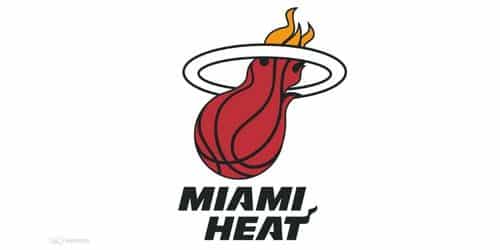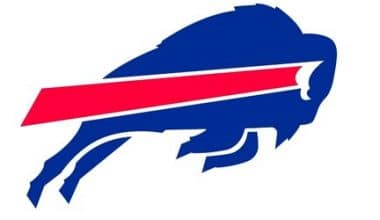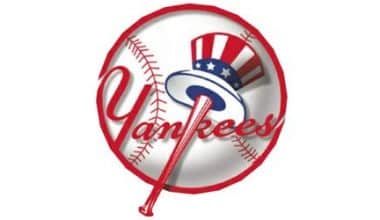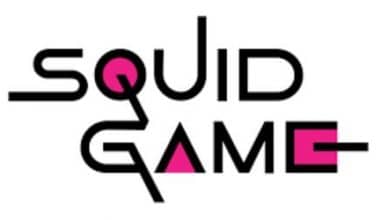The Miami Heat is an American professional basketball team. He was a member of the NBA’s Southeast Division from the time it began in 1988. The Miami Heat have won several NBA titles and are now members of the National Basketball Association. The Heat are based in the tropical Florida city of Miami, while the FTX Arena serves as their home court. The Miami Heat has a logo that includes a basketball on fire and is one of the most iconic images in basketball. Not only that, but the flame’s base is decked out in the same hue as athletic gear. All of the letters are big and sans serif, but the T and the two A’s have some fascinating flourishes.
Overview
Florida was basically one of the few financially advantageous and heavily populated states that the NBA diligently avoided for a very long time. The shady reputation of the state is the cause of this circumspect approach. In essence, the nearby sandy beaches were a reflection of Florida, the unofficial center of the world’s drug trade.
The establishment of two NBA teams in Miami and Orlando was given the commissioner’s blessing in 1987 by David Stern. Even before the Minnesota Muskies relocated there in 1968 and changed their name to the Miami Floridians, the city of Miami had a long history as the home of a professional basketball team.
To better reflect the team’s massive roster, the Floridians dropped their geographic prefix. Thus, they became simply the Floridians in 1970. In 1972, the squad competed in the ABA playoffs, however, it was promptly eliminated after losing four straight games.
It is not surprising that Floridians are now among those who were chosen based on the results of voting among the prospective NBA team’s supporters. All of Florida’s more or less iconic symbols, including the sun, palm trees, tornadoes, and beaches, may be found among the names in addition to historical allusions. The names Suntan, Vice (a nod to the popular 1980s television show), and Heat were chosen as the winners. The final option continued to win.
Miami Heat Logo – Meaning and History
Mark Henderson designed the iconic Heat logo for the Miami Heat. The “Miami Herald Newspaper” held a contest in 1988 to determine the finest team logo. Out of over 13,000 choices, Mark Henderson’s selection was the one that should represent the squad. Generally, one of the most well-known American clubs’ logos, which first debuted in the year the franchise was established. Instantaneously, the initial picture of a flaming ball flying into a basketball hoop appeared, and it didn’t change. The Miami Heat logo experienced only one tiny change during the brief time it was in use, arriving to us practically exactly as it had been.
Old Miami Heat Logo (1988-1999)
In 1986, the team was given its name as a result of a fan contest. The team was generally one of just two expansions permitted for Florida at the time. Zef Buffman, a founding partner recognized for bringing Broadway shows to Miami, announced the competition, which resulted in 20,000 submissions.
Contestant Stephanie Freed came up with the name “Miami Heat” to represent the city’s scorching climate, vibrant culture, and intense athleticism. The most popular choice among fans was basically too good to pass up, and the owners agreed. It was also appealing to Buffman, who was looking for a name that would work well in various marketing contexts.
The logo, of course, has to capture that same ferocity. A logo contest was held by the Miami Heat, and the winning entry featured a basketball on fire created by Mark Henderson and Richard Lyons. (For more on this topic, see the section on “Shapes” below.) Of the 13,000 entries, 34% of the vote went to their design since it resonated with fans.
Both the runner-up and the loser designs included a basketball while donning a pair of shades. That picture, however, just doesn’t seem like it would last as long in people’s minds.
New Miami Heat Logo (2000 to Present)
After a string of heartbreaking defeats at the hands of the Knicks in 1999, the club chose to reinvent itself and present itself as the undefeated champs they were always destined to be. They also wanted to update its visuals for the new decade, as did many other properties.
Because they were updating their traditional uniforms, it seemed sensible to revise their entire brand’s visual representation. Hence, they updated their logo by ditching the bright orange flaming ball for a new one that features deeper hues and a more sketchy, hand-drawn look. It was as if they were reiterating the team’s strong talent despite their recent failures.
The developers made the ring white with a thin black edge. They painted the ball brick red under the rim of the basket and orange above the rim. A dark hue was also used to repaint the ball’s lines. Although these hues may seem overly vibrant and passionate, they fit perfectly with the fire motif and cannot be accused of being dull in the Miami Heat logo. Players, by the way, agree that the color red is a joyful one. Regardless, it has now become one of the most iconic sports logos of all time.
The team’s uniforms had also dropped the orange in favor of a red and yellow color scheme. Thus the new logo would follow suit. (Refer to “Colors” below for more info.) The logo, however, seems more cohesive with the rest of the team’s branding without the orange gradient.
Thus, the Heat was prepared to once again rule the road when the new millennium began.
Miami Heat Logo Shapes
The asymmetrical design of the Miami Heat logo makes it unique and gives it a dynamic and edgy edge.
The wordmark is divided between two lines that are not parallel to one another. This, basically creates the appearance of movement by making the words appear to be passing one another. The subtle allusion to basketball players sprinting across the court is also amusing.
Then, pointed at the word “Miami,” the burning basketball descends at an angle across the vertical axis. The design makes excellent use of negative space to counteract the words’ awkward alignment with the main image. The only aspect of the design that is symmetrical is the hoop, which brings everything together.
Miami Heat Logo Typefaces
A geometric, oblique sans-serif font with strong crossbars and moderate kerning serves as the Miami Heat logo wordmark. Its dynamic, athletic vibe generally makes it the perfect choice for a basketball team’s logo. However, if you pay close attention, you will see that the As have angular crossbars that are pointed. This element provides the wordmark with a furious and thrilling feel, together with the tiny flame that is rippling off the “T.”
The typeface kerning was slightly tightened up during the redesign of the logo to give it a cleaner appearance. The tiny flame that emanates from the T has also changed. It now has a lively, recognized shape that makes a splash.
Although the wordmark in the full design is entirely black, it is commonly displayed on jerseys as white letters with a red outline, a black inner border, and a yellow inset. In earlier iterations, a white border was used in place of red or black.
Miami Heat Logo Colors
The original logo’s burning basketball had an orange gradient on it, as was customary in the 1990s. The solid black ring stood in stark contrast to the flaming color. Negative space makes up the characteristic seams on the basketball. This, give it the impression of a fireball that also happens to be shaped like a basketball.
The reworked logo no longer features any references to flames and places more emphasis on the sport itself. All of the seams were filled in with black, and the eye-catching orange gradient was changed to a more subdued reddish brown. It seemed fitting that the only orange flames were the ones that lingered over the basket as if to emphasize the great determination that went into making the shot.
However, due to the dominance of these colors, the black ring was swapped out for a white one with a black outline. This was yet another attempt to give the logo’s symbols some realism.
Lettermarks
In 2008, a new logotype made its debut. The original wordmark however served as the inspiration for this one. The letters “M” and “H” are combined to form the initials “MH,” with their outer stems meeting across the slanted baseline. The main wordmark is an “H.” with the same flame-like flair as the “T” in the logo.
There was also a lettermark variant of the Miami Heat logo used on some products between 1999 and 2006. The lettermark, which consisted of the initials “MH” in a stylized style, echoed the hues and slant of the incendiary ball. The letters basically take the form of smoldering flames, starting in red and ending in bright yellow.
The design stands out on uniforms and items thanks to the contrast between the white letters and the bold red outline, black inner border, and bright gold inset.
What Does the Miami Heat Logo Mean?
While the orange of the Miami Heat logo represents the sun, energy, youth, and activity, the red represents passion, life, and tenacity. The team’s elegance, power, and domination are represented by the black, on the other hand.
Who is the Best Miami Heat Player?
Below is a list of the top 5 best Miami Heat players of all time. Basically, these guys were crucial in the team’s championship run. The South Beach squad was only recognized as an NBA powerhouse because of these players.
#1. Dwayne Wade
Possibly the best and greatest Miami Heat player of all time. The former Marquette standout was selected by the team with the fifth overall pick in the 2003 draft. Hence, he made his imprint on the team by winning a slew of awards. As the Finals MVP in 2006, 2012, and 2013, Wade was able to assist the Heat in winning three NBA championships. Throughout his 14 seasons with the organization, Wade averaged 22.7 points, 5.6 assists, and 4.7 rebounds.
In addition to his many honors, D. Wade also holds team records for points (21,556), games played (948), field goals made (7,842), and win shares (116.1). He wore the Heat uniform in all 13 of his NBA All-Star Game appearances. He was also named to the All-NBA First Team in 2009 and 2010.
#2. LeBron James
LeBron James left an indelible mark on the franchise with two NBA championships in 2012 and 2013 despite playing for only four seasons. It all started in 2010 when James moved to Miami and joined up with Dwyane Wade and Chris Bosh. The three players seemed unbeatable as they plowed through the competition en route to four consecutive appearances in the NBA Finals.
James was the team’s leading scorer in each of his four seasons, averaging 26.9 points, 7.6 rebounds, and 6.7 assists in 294 contests. King James firmly established himself as one of the Cavaliers’ all-time greats by establishing new franchise records in points per game (26.9), player efficiency (29.6), as well as minutes per game (38).
#3. Alonzo Mourning
Alonzo Mourning, who was traded to the Heat from Charlotte in 1995, is widely regarded as one of the league’s best centers to ever don a Miami Heat uniform. Since then, Mourning has become a legitimate superstar thanks to his dominance in the paint as the team’s standout player. The Heat have made the playoffs in six straight seasons thanks to this historic transaction. This nevertheless includes a run in the Eastern Conference in 1997.
At the conclusion of his time in Miami, Mourning had been named the NBA’s defensive player of the year six times. While he had also won the honor twice in a row (1999 and 2000). The 6-foot-10 center has 1,625 career blocks, enough for an average of 2.7 per game, which ranks first in team history. Overall, Zo played a crucial role in Miami’s 2006 championship run.
#4. Chris Bosh
Chris Bosh, the third member of the Miami “Heat,” frightened the other team’s big man with his relentless defense and off-the-wall attacking skills. Bosh played with the Heat for six seasons. However, he would have played another two or three if not for a blood clot in his chest. He was also crucial to the team’s 2011-2014 championship run.
The 6-foot-11 power forward averaged 18.0 points, 7.3 rebounds, and 1.8 assists in 384 games while he was a Hurricane. The two-time NBA champion was rated fifth in franchise history in points scored (6,914), seventh in blocks (332), and eighth in rebounds (2,816) before the organization retired his jersey in March 2019.
#5. Shaquille O’Neal
Shaquille O’Neal and Dwayne Wade formed the newest dominant combo in the NBA in 2004, after their association with Kobe Bryant ended. During the 2005–06 season, with O’Neal’s guidance, the club improved its play and won its first NBA title in franchise history with a 4–2 series victory over the Dallas Mavericks.
Shaq spent less than four full seasons in Miami. During this course, he appeared in 205 games and averaged 19.6 points, 9.1 rebounds, and 2.1 assists. The giant, who stands at 7 feet and 1 inch, set a new record for field goal percentage (59%). This, nevertheless makes him the team’s all-time leader. In addition, his 384 blocks place him sixth all-time.
How Much Does it Cost to Own the Miami Heat?
Miami had a 53-29 record in the previous season and won the Eastern Conference. The Heat has been in the postseason each of the previous three years, reaching the NBA Finals in 2020 and the Eastern Conference Finals in 21-22. Jimmy Butler’s addition to Miami is mainly responsible for its success, and the Heat honored the player by signing him to a three-year, $146 million maximum extension.
Miami Heat is currently valued at $3B
Who is the Miami Heat Captain?
Udonis Haslem
Udonis Johneal Haslem is a United States professional basketball player and the captain of Miami Heats Of the National Basketball Association (NBA). He was a pivotal player of four Florida Gators teams that advanced to the NCAA tournament during his college basketball career. Haslem is the longest-tenured player in Heat history. He began his professional career in France with Chalon-sur-Saône and then signed with his hometown team in 2003. During his time with the Heat, he has generally won three NBA titles.
Why is it called Miami Heat?
The Miami Heat got their name basically from a naming contest. Florida residents, sandy shores, and bronzed skin were just a few of the many suggestions made. However, in the end, Heat beat out Suntans in some way, and the rest is old hat.
Miami Heat History
The Miami Heat, or simply “The Heat,” is an NBA basketball team based in Miami, Florida, USA. They play in the Eastern Conference division and this squad has three NBA championships won (2006, 2012, 2013) to its name.
In 1988, the Miami Heat and the Charlotte Hornets both became NBA teams. They only won 15 games in their rookie season. However, they progressed greatly over the next three NBA campaigns, qualifying for the playoffs in 1991–1992, where they were soundly beaten by the Chicago Bulls on their way to losing the NBA Finals. In the 1993-1994 postseason, the Heat once again faced the Atlanta Hawks and also came up short.
In 1995, Pat Riley, a future Hall of Fame coach, took over as head coach of the Heat. With All-Stars Tim Hardaway and Alonzo Mourning on his roster, Riley led the Miami Heat to a division title. He also clinches an incredible 61-21 record in only his second season as head coach. While competing in the 1996–97 playoffs, the Heat was victorious over both the Orlando Magic and the New York Nicks. However, the Heat’s postseason run ended with a loss to the Chicago Bulls in the Eastern Conference Finals.
The Miami Heat have won three consecutive division titles, all occurring in the 1997–98 season. However, in all three championship-winning postseasons, the squad was eliminated by the New York Nicks. The Heat’s six-year playoff streak ended in 2001-02, and Riley left as head coach after the 2002-03 campaign when the team placed dead last, to take a seat on the board of directors.
2004-2006
Miami Heat acquired guard Dwayne Wade in 2003, and the following year they earned a playoff position. After signing Shaquille O’Neal in 2004, the squad went on to win 59 games and a division title in 2004–2005. They continued that success in the playoffs, sweeping the Washington Wizards and the New Jersey Nets. However, they were stopped in the Eastern Conference finals by the Detroit Pistons.
Heat won their first NBA title after Riley returned as head coach just 22 games into the 2005-06 season. They defeated the Detroit Pistons in a rematch of the conference finals. They then swept the Dallas Mavericks in a six-game series. The rising star Wade led the Heat to multiple winning seasons beginning in 2006. Nevertheless, they never advanced past the first round of the playoffs.
2009-2013
After 2009–10, the Miami Heat saw another upswing as Chris Bosh and LeBron James joined the team and free agent Wade signed a new long-term contract. The 2010–11 season, as a result, saw a lot of media coverage of the star-studded team. After a shaky start to the season, the Heat stormed through the playoffs, dropping only three games en route to the NBA championship game, where they fell to the Dallas Mavericks again.
The next year, in 2011–12, the Miami Heat advanced to the NBA Finals and ultimately won the title by defeating the Oklahoma City Thunder. Likewise, in 2012–13, the Heat won a record 66 games. They then went on the second-longest winning streak in NBA history (27 victories) en route to their third straight appearance in the NBA finals. This time around, they defeated the San Antonio Spurs in a thrilling seven-game series.
2014-2015
Miami Heat became the first basketball team in 27 years to make four consecutive finals appearances after winning their division for the fourth straight season in 2013–14. They then cruised through the playoffs to earn a rematch with San Antonio Spurs in the NBA finals. However, in their second Finals appearance, the Heat was swept by the San Antonio Spurs after five games.
To offer the Miami Heat greater financial flexibility and to reevaluate their alternatives, all three of the team’s superstars tore up their contracts during the next offseason. Besides, the squad was allegedly operating considerably above the NBA salary cap at the time.
LeBron James left the Miami Heat to rejoin his old team, the Cleveland Cavaliers, although Chris Bosh and Dwayne Wade both agreed to new contracts with the Heat. Thus, despite playing in a relatively weak Eastern Conference, the Heat were eliminated from playoff contention in 2014–15. However, the following year, the squad came back stronger than ever. This time, winning 48 games to reach the playoffs where they were eliminated in the second round.
Miami Heat Main Rivals/Competitors
#1. Chicago Bulls
When the Miami Heat started to compete seriously in the 1990s, when Michael Jordan and the Chicago Bulls were the dominant force, the rivalry between those two teams was only beginning. The Bulls defeated the Heat three times during that decade, winning the NBA championship each time.
The rivalry faded after Michael Jordan’s retirement and the Heat’s downfall at the turn of the millennium. However, it significantly heated up when the Miami Heat played the Bulls in the 2006 playoffs. Over the course of six games, the Heat defeated the Bulls 4-2 to clinch the NBA championship. The Bulls would defeat the Miami Heat, the reigning champions, in the opening round of the following season.
With the resurgence of the Chicago Bulls and the ascent of hotshot Derrick Rose, as well as the Heat’s re-signing of Dwayne Wade and the addition of superstars LeBron James and Chris Bosh, the rivalry heated up once again. Before re-signing with the Heat, Dwayne Wade declined the opportunity to play for his hometown team, the Bulls. Likewise, LeBron James declined the opportunity to play alongside Rose for the Chicago Bulls. A lot of significant fouls and rough play between opposing teams’ players have been committed as a result of the rekindled rivalry. In 2011, the Bulls and Heat squared off in the Eastern Conference finals, with the Heat winning in five games.
#2. New York Knicks
After meeting in the playoffs four times in a row from 1997 to 2000, the Miami Heat and New York Knicks also became bitter rivals. Both series consisted of seven games. Pat Riley, who coached the Knicks in the early 1990s and the Heat in the late 1990s, was the primary protagonist in this rivalry.
While Stan Van Gundy (Jeff’s older brother) was an assistant coach for the Heat, he replaced Riley as Knicks head coach. Both Alonzo Mourning and Patrick Ewing were close friends ever since their days as college basketball colleagues at Georgetown. Larry Johnson, one of the Knicks’ top players, and Mourning have had a rocky relationship ever since they played together for the Charlotte Hornets.
#3. Boston Celtics
The Miami Heat and the Boston Celtics first met in the 2010 NBA playoffs. Here, the Celtics won 4-1 and eventually made it to the NBA championship finals. After losing to the Boston Celtics for the third time in a row in the first round, Wade declared that it would be his last such defeat for the foreseeable future.
#4. Orlando Magic
Due to the fact that both clubs are situated in Florida, The Heat and Orlando Magic are rivals. The competition is hence known as the Sunshine State Derby. Superstar players from both teams, notably Penny Hardaway and Shaquille O’Neal from Orlando and Tim Hardaway and Alonzo Mourning from Miami, added to the intensity of the competition.
The Heat defeated Orlando 3-2 in the first meeting between the two teams, which occurred in the 1997 NBA Playoff Finals. They haven’t played each other in the playoffs since then.
Dwight Howard and Dwayne Wade’s rise to prominence for the Orlando Magic and Miami Heat, respectively, as well as Miami’s 2010 acquisition of superstars like Chris Bosh and LeBron, also ratcheted up the rivalry between the two teams to an all-time high.
#5. Dallas Mavericks
Both the Miami Heat and the Dallas Mavericks first compete against each other in the NBA Finals in 2006. This, nevertheless, marked the beginning of their rivalry. The Heat had signed Shaquille O’Neal the year before. And whileDirk Nowitzki captained the Mavericks’ the Heat was led by Dwayne Wade.
#6. Indiana Pacers
The 2012 NBA Eastern Conference semi-final matchup between the Miami Heat and the Indiana Pacers sparked a fresh rivalry between the two teams. Although these two teams met in the 2004 NBA Playoffs (a series the Pacers won 4-2), only Udonis Haslem of the Miami Heat is still active in 2014.
Who are the Minority Owners of the Miami Heat?
Raanan Katz is the minority owner of the Miami Heat. He has very thin skin. He has a flamboyant public profile, with a day and street in Sunny Isles dedicated to him. However, he is keen on maintaining his anonymity.
Who is on Miami Heat Roster Now?
Miami Heat Roster
| NAME | NO | POS | HT | WT | DOB | AGE |
| B. Adebayo | #13 | C | 6-9 | 255 lbs | 07-18-1997 | 25 |
| C. Martin | #16 | SF | 6-5 | 205 lbs | 09-28-1995 | 27 |
| D. Smith | #9 | SG | 6-3 | 203 lbs | 12-30-1997 | 24 |
| D. Robinson | #55 | SF | 6-7 | 215 lbs | 04-22-1994 | 28 |
| D. Dedmon | #21 | C | 6-10 | 245 lbs | 08-12-1989 | 33 |
| G. Vincent | #2 | PG | 6-2 | 200 lbs | 06-14-1996 | 26 |
| H. Highsmith | #24 | SF | 6-5 | 220 lbs | 12-09-1996 | 25 |
| M. Strus | #31 | SF | 6-5 | 215 lbs | 03-28-1996 | 26 |
| K. Lowry | #7 | PG | 6-0 | 196 lbs | 03-25-1986 | 36 |
| U. Haslem | #40 | PF | 6-7 | 235 lbs | 06-09-1980 | 42 |
| J. Cain | #8 | SF | 6-6 | 191 lbs | 03-20-1999 | 23 |
| O. Yurtseven | #77 | C | 6-11 | 275 lbs | 06-19-1998 | 24 |
| J. Butler | #22 | SF | 6-7 | 230 lbs | 09-14-1989 | 33 |
| V. Oladipo | #4 | SG | 6-3 | 213 lbs | 05-04-1992 | 30 |
| N. Jovic | #5 | PF | 6-10 | 205 lbs | 06-09-2003 | 19 |
| T. Herro | #14 | SG | 6-5 | 195 lbs | 01-20-2000 | 22 |
Conclusion
The logo for the Miami Heat is a stunning depiction of the game’s thrilling intensity and excitement. What’s more, it’s the perfect logo because it has a simple, instantly memorable image. It’s no surprise, then, that the Miami Heat hasn’t changed much since they first appeared in 1988. The ball catches fire and flies through the net. This design is not only meaningful but also looks fantastic on uniforms.
The Miami Heat’s logo is not only one of the most recognizable in the NBA but also a shining example of successful sports branding and classic, timeless design.
Related Articles
- DODGERS LOGO: Meaning, History, Evolution & All You Need
- PLAYSTATION LOGO: Meaning, Symbol, History & Evolution (Detailed)
- SQUID GAME LOGO: Why It Is Famous & What it Symbolizes
- TAMPA BAY BUCCANEERS LOGO: Its Original Name and What Changed From the Logo






